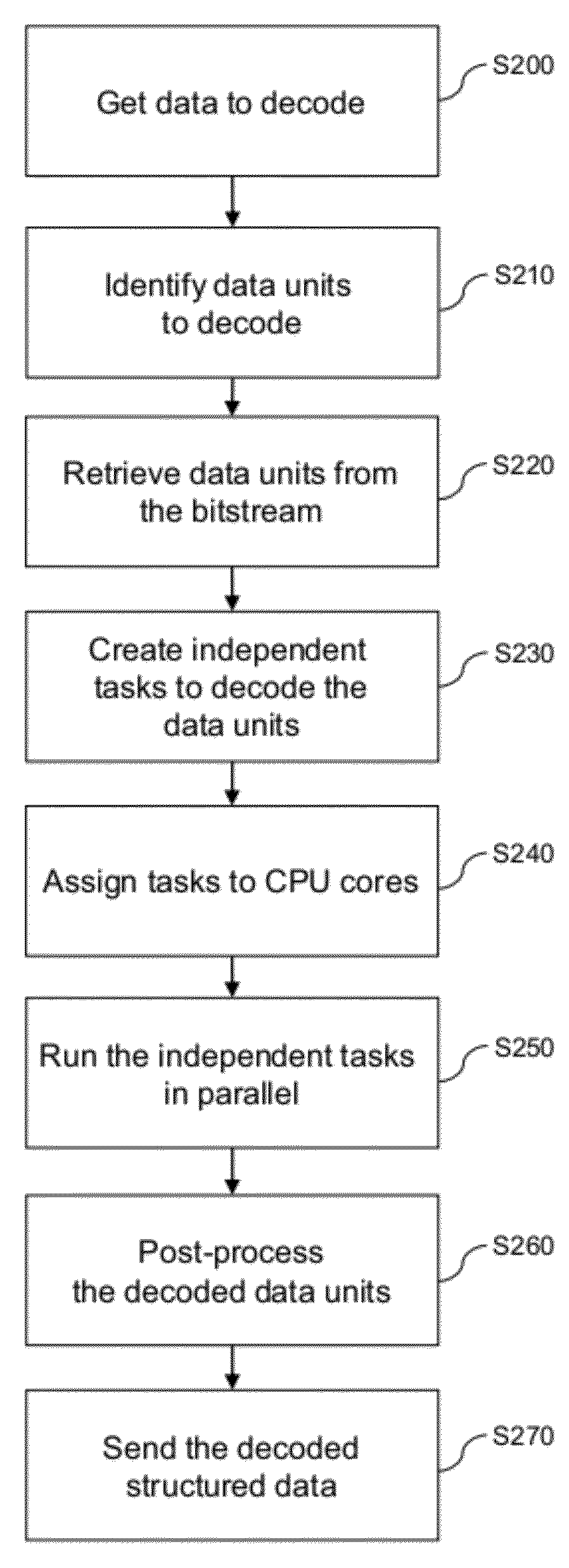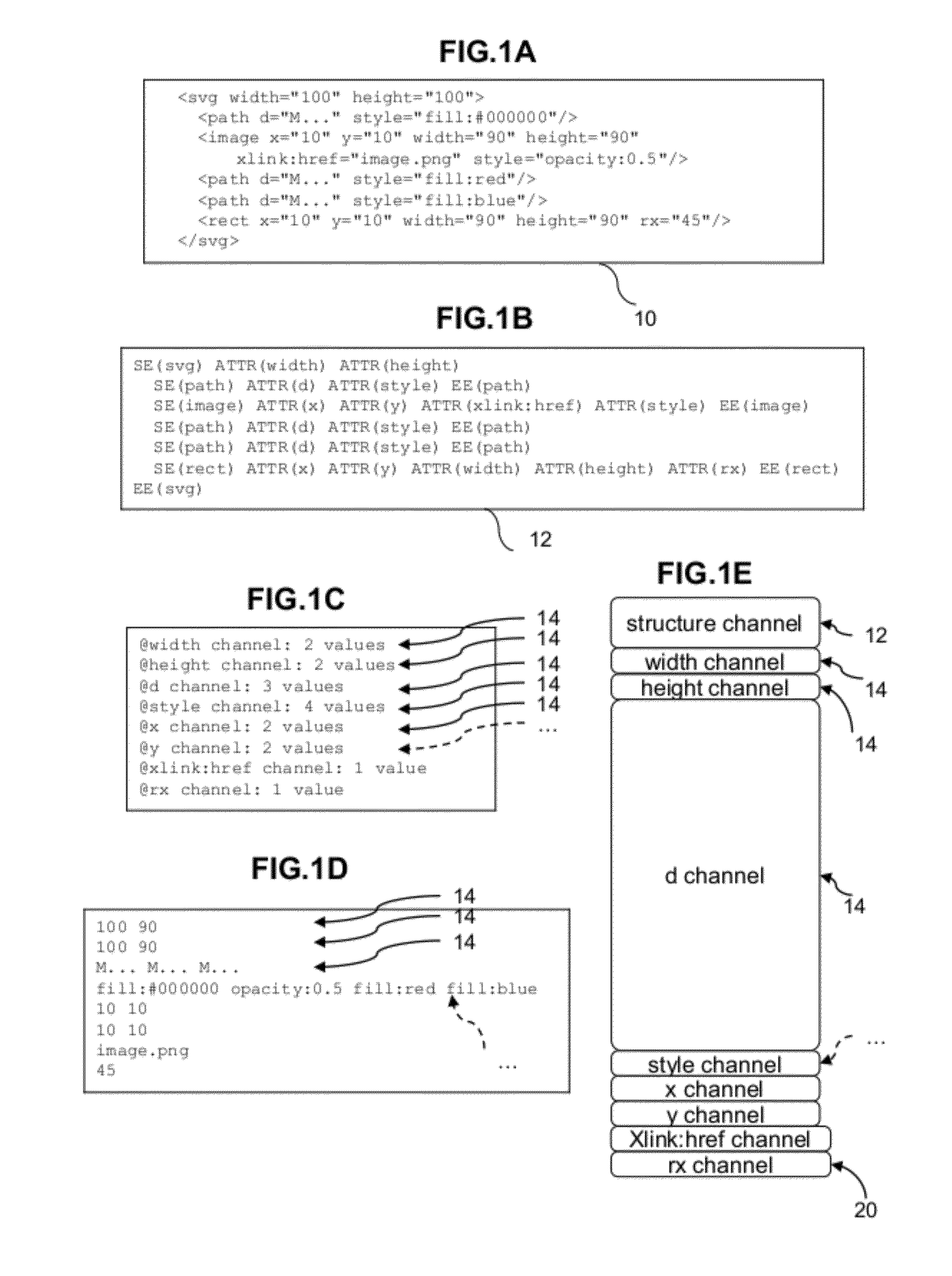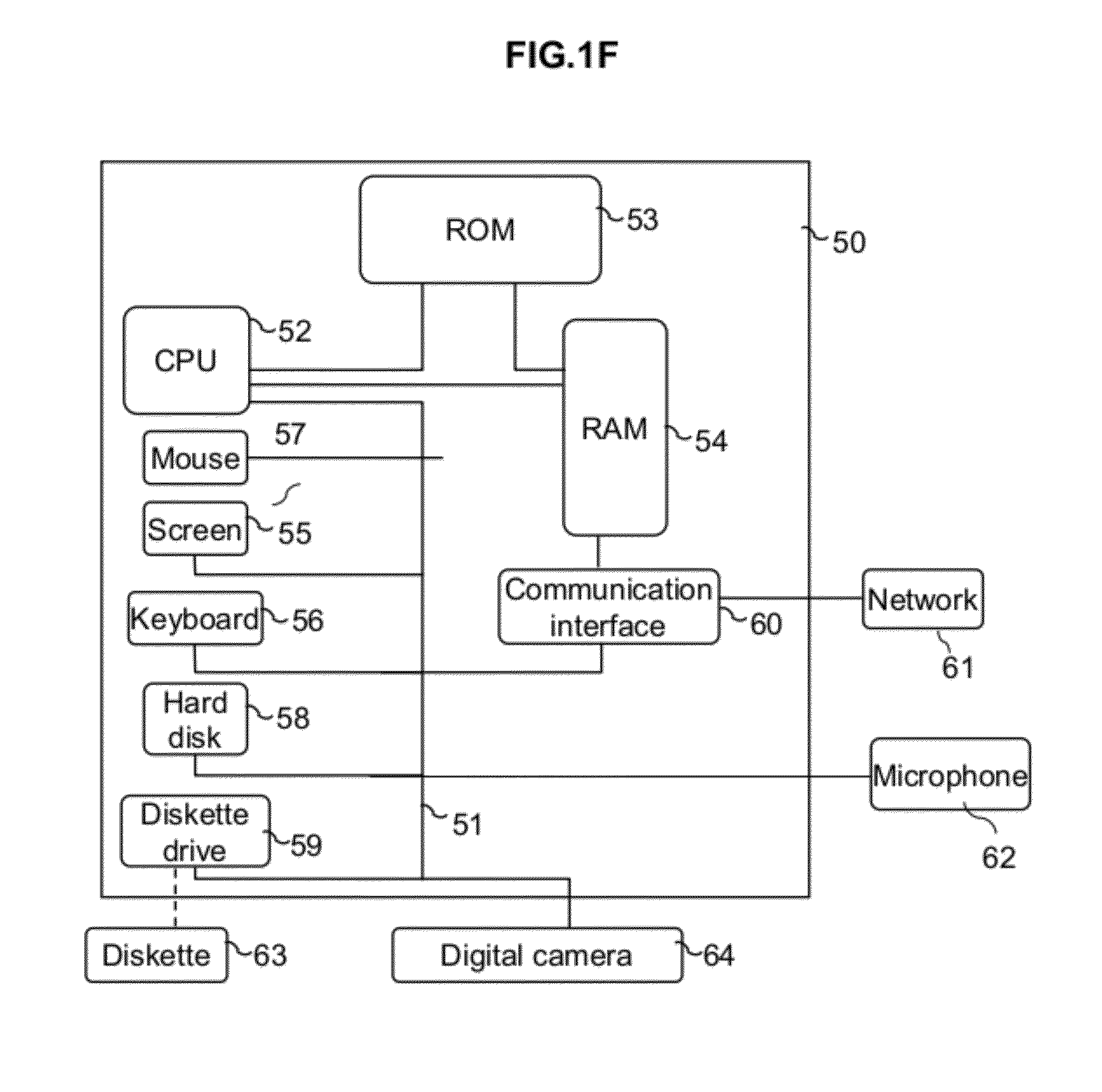Method and apparatus for decoding encoded structured data from a bit-stream
a structured data and bit-stream technology, applied in the field of decoding encoded structured data from a bit-stream, can solve the problems of large amount of memory to store all the data simultaneously, inability to provide easy access to any desired part of the data, and large xml documents in such formats. , to achieve the effect of increasing the independency of the units from each other, efficient sharing of cpu core workload
- Summary
- Abstract
- Description
- Claims
- Application Information
AI Technical Summary
Benefits of technology
Problems solved by technology
Method used
Image
Examples
Embodiment Construction
[0087]Various exemplary embodiments, features, and aspects of the invention will be described in detail below with reference to the drawings.
[0088]To that end, a first aspect of the invention relates to a method for decoding encoded structured data from a bit-stream comprising a plurality of encoded data units, the method comprising:[0089]obtaining unit information comprising positions of the encoded data units within the bit-stream;[0090]retrieving the encoded data units from the bit-stream, based on the unit information;[0091]creating decoding tasks for decoding the retrieved encoded data units;[0092]assigning the created decoding tasks to cores of a multi-core decoder, based on estimated decoding costs of the encoded data units;[0093]running the tasks on their assigned cores to decode the encoded data units in parallel.
[0094]As illustrated later on, this method may apply to an
[0095]EXI bit-stream resulting from a (pre)compression mode coding, where the data units are formed by th...
PUM
 Login to View More
Login to View More Abstract
Description
Claims
Application Information
 Login to View More
Login to View More - R&D
- Intellectual Property
- Life Sciences
- Materials
- Tech Scout
- Unparalleled Data Quality
- Higher Quality Content
- 60% Fewer Hallucinations
Browse by: Latest US Patents, China's latest patents, Technical Efficacy Thesaurus, Application Domain, Technology Topic, Popular Technical Reports.
© 2025 PatSnap. All rights reserved.Legal|Privacy policy|Modern Slavery Act Transparency Statement|Sitemap|About US| Contact US: help@patsnap.com



